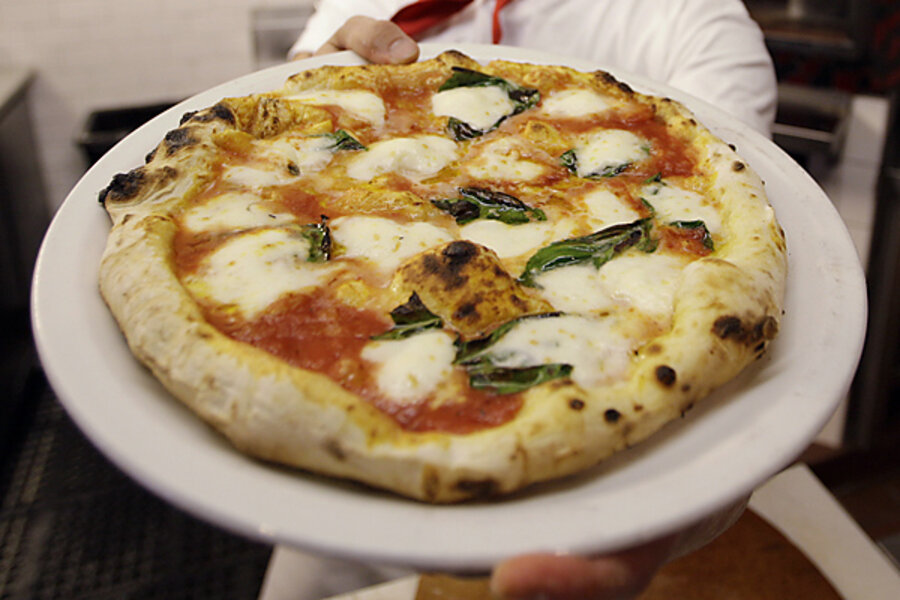Imagine the economy were a pizza parlor
Loading...
At last Wednesday’s hearing on tax reform, three witnesses–Rosanne Altshuler, Larry Lindsey, and I–invoked a famous rule of thumb about taxes. We each told the Senate Budget Committee that high tax rates are disproportionately harmful for the economy and that:
If you double tax rates, you quadruple the resulting economic harm.
If a 10% tax rate on some activity does a certain amount of economic damage, for example, then it’s a reasonable guess that doubling the tax rate to 20% would multiply that damage by a factor of four.
It was nice to hear such agreement among the panelists, but judging by the senators’ reaction, this idea is not intuitive. So let me try to explain with a simple example.
Suppose there are five people who might buy a pizza. The first person values a pizza at $14.50, the second at $13.50, the third at $12.50, the fourth at $11.50, and the fifth at $10.50.
If pizzas cost $10, all five people will buy one. The first person gets a net benefit of $4.50, since the pizza was worth $14.50 to her, but she paid only $10. The second person gets a benefit of $3.50, and so on. Add it all up, and the benefit of the pizza market is $12.50 (= $4.50 + $3.50 + $2.50 + $1.50 + $0.50).
Now suppose that the government levies a 10% tax on pizzas; that lifts the price to $11. Now only the four consumers who place the highest value on pizzas will buy them; Mr. $10.50 won’t buy. The four remaining consumers now benefit by $3.50 + $2.50 + $1.50 + $0.50 = $8.00 from buying pizza. The government collects $4.00 in revenue, so the total economic benefit of the pizza market is $12.00, $0.50 less than before. That 50-cent loss falls on the hungry guy who no longer buys a pizza. The $1 loss for each of the four buyers isn’t lost to the economy; instead, it transfers to the government.
Now suppose, instead, that the tax is 20%; pizzas now cost $12 each, and only three consumers will buy. Their total benefit is $4.50 (= $2.50 + $1.50 + $0.50). The government collects $6.00 in revenue, so the total economic benefit is $10.50. That’s $2.00 less than without a tax.
So there you have it. When you double the tax from 10% to 20%, you quadruple the economic harm from $0.50 to $2.00.
Why does this happen? Because doubling the tax doubles the number of consumers who drop out (from 1 to 2) and doubles the average economic value of the pizza sales that never happen (from $0.50 to $1.00). Two times two is four, so the overall effect is to quadruple the economic harm.
Put another way, the value of the second lost pizza ($1.50) is three times larger than the value of the first one ($0.50). So the economic harm of the 20% tax is four times the harm of the 10% tax.
This is a big deal when you design a tax system for the entire economy. To avoid needless economic harm, you should aim for low tax rates and the broadest possible tax base. If you need to raise $6.00 from our mythical food economy, for example, it would be far better to levy a 5% tax on pizzas, tacos, and hamburgers, than a 20% tax on pizzas alone.
I hope that whets your appetite for base-broadening tax reform.
P.S. Did I cook the pizza example to get the increase to be exactly a factor of four? Of course. In the real world, the actual multiple will vary. If the fifth person valued the pizza at only $10.25, for example, the loss from the 10% tax would have been $0.25, and the loss from the 20% tax would have been seven times larger at $1.75. Conversely, if the fourth person valued the pizza at only $11.00, the loss from the 20% tax would have been $1.50, only three times larger than the $0.50 loss from the 10% tax. The double/quadruple rule of thumb assumes an even spread of consumers and their values — a reasonable starting assumption until you have more information.
Add/view comments on this post.
------------------------------
The Christian Science Monitor has assembled a diverse group of the best economy-related bloggers out there. Our guest bloggers are not employed or directed by the Monitor and the views expressed are the bloggers' own, as is responsibility for the content of their blogs. To contact us about a blogger, click here. To add or view a comment on a guest blog, please go to the blogger's own site by clicking on the link above.





